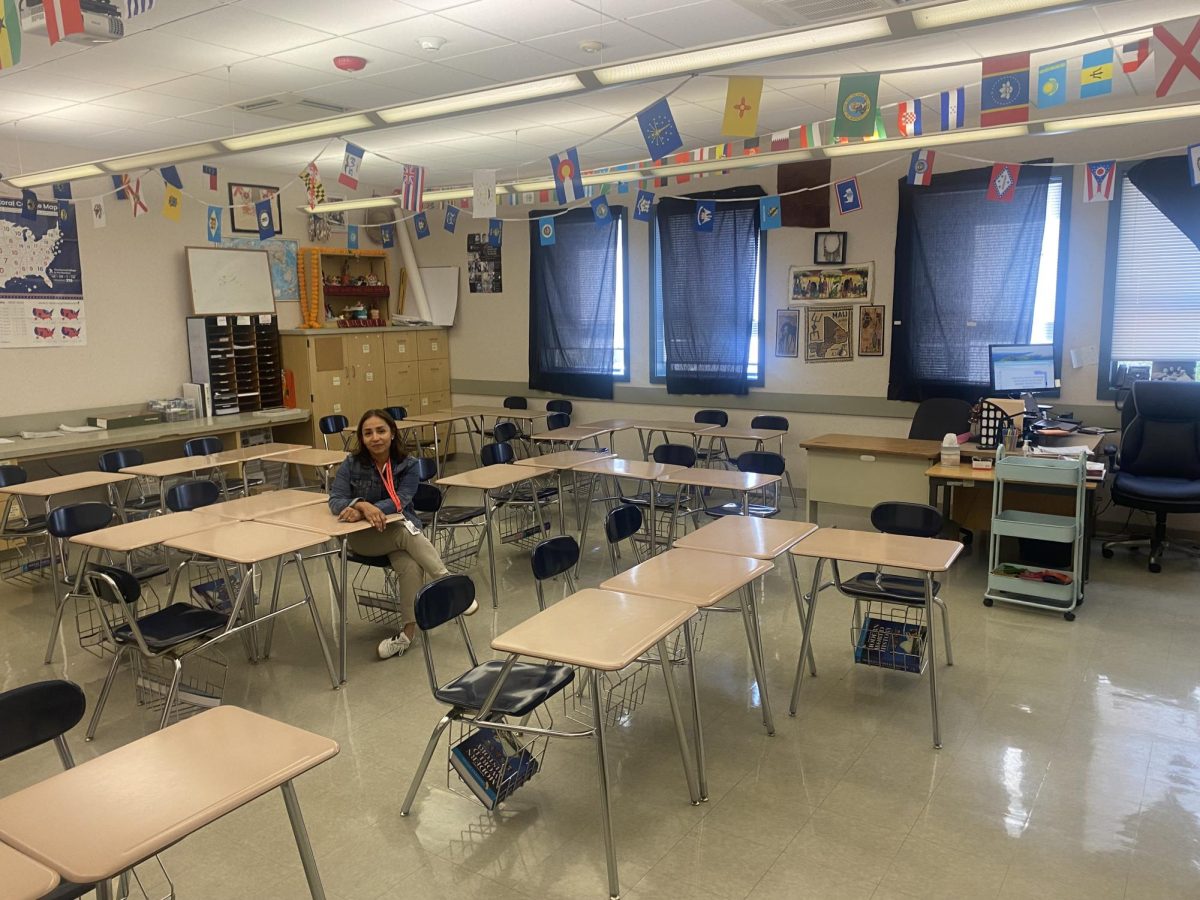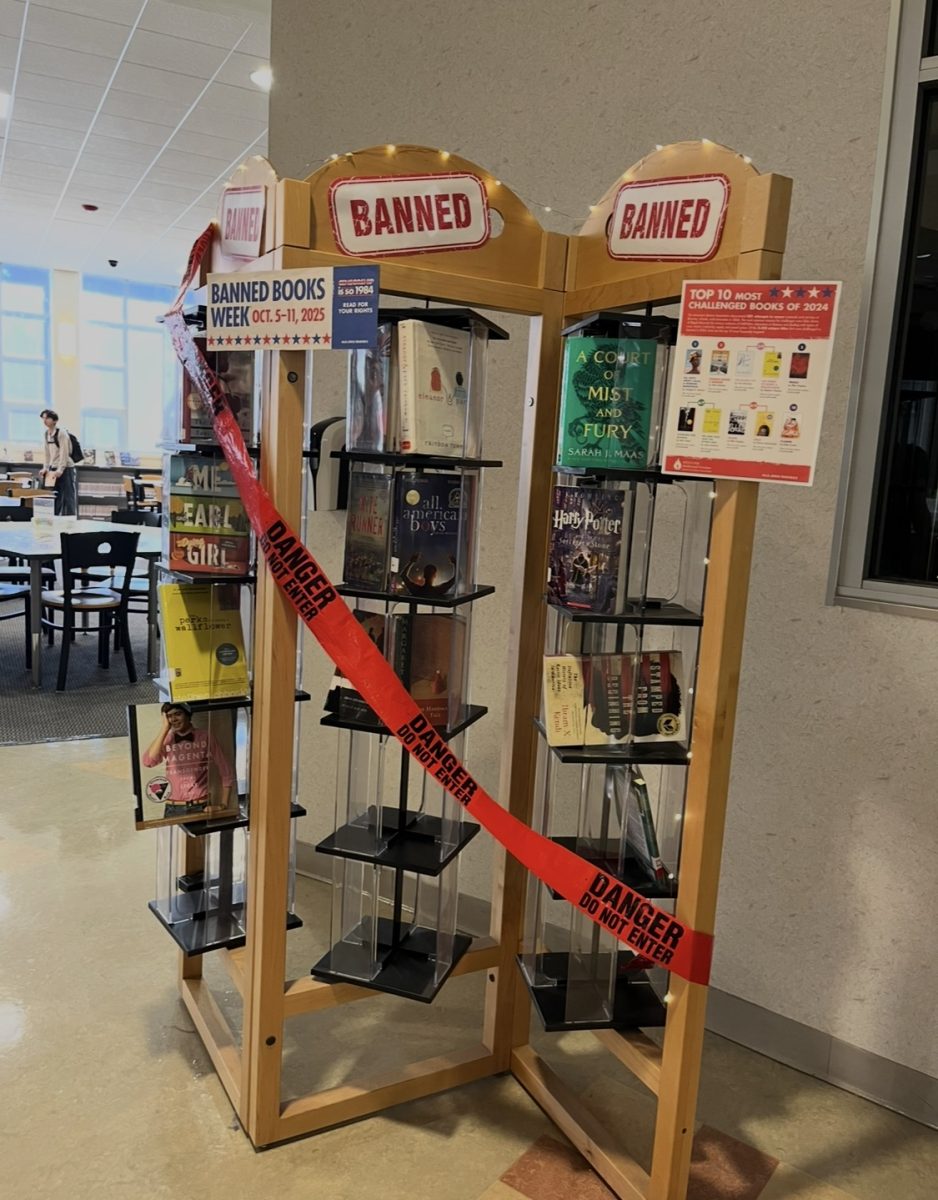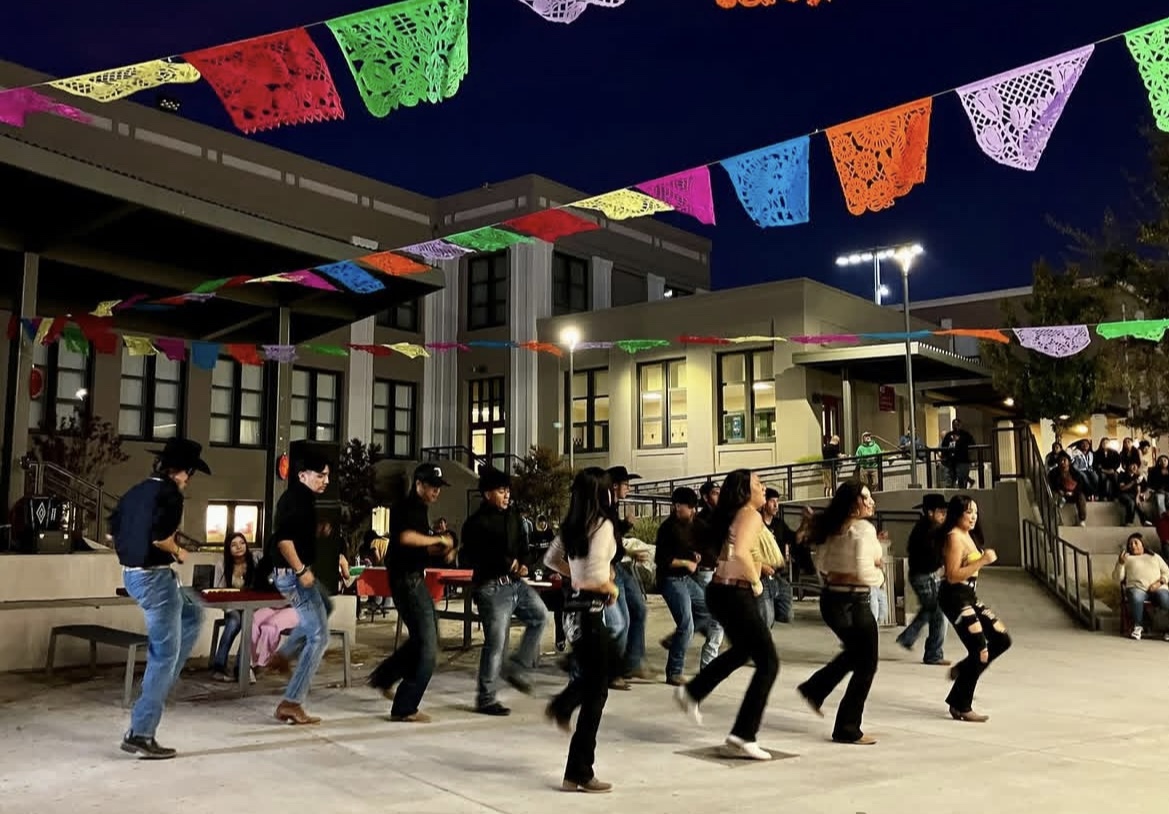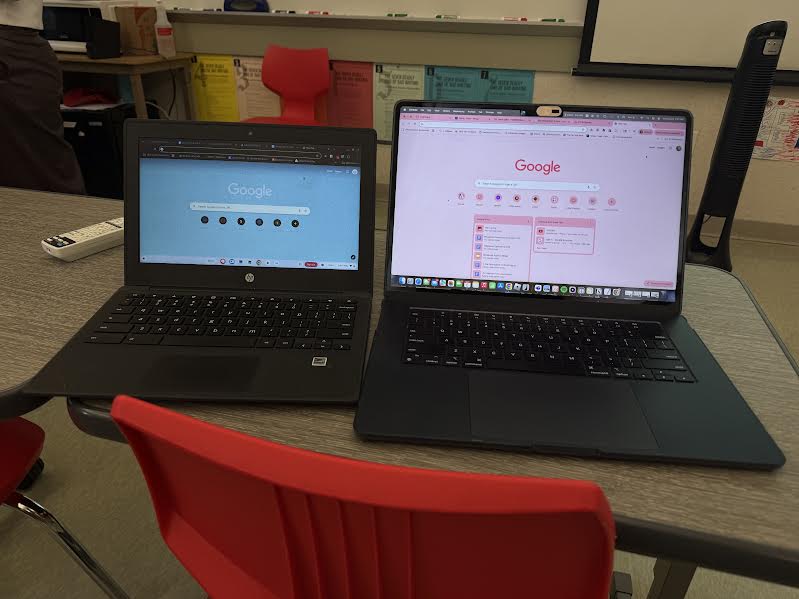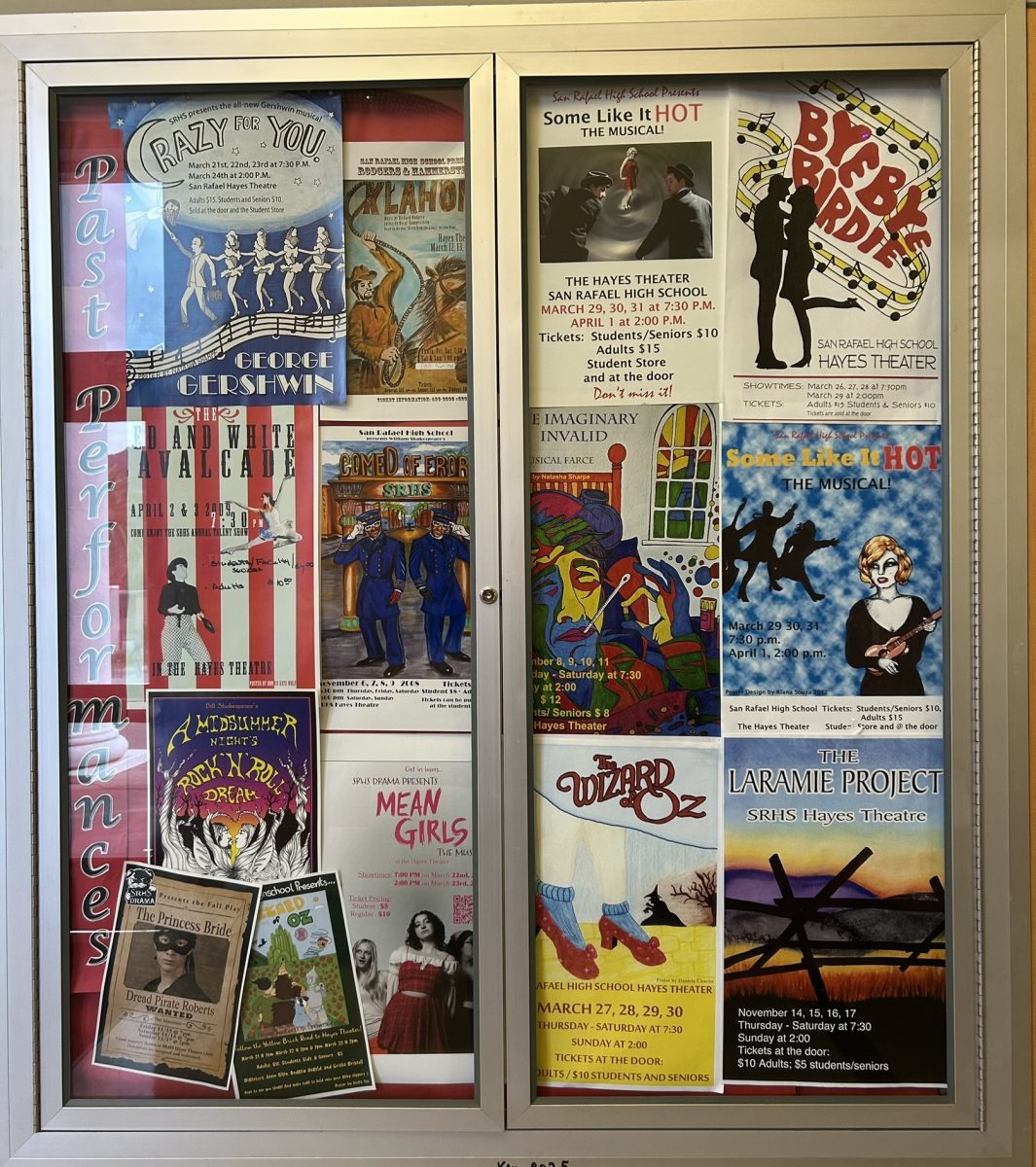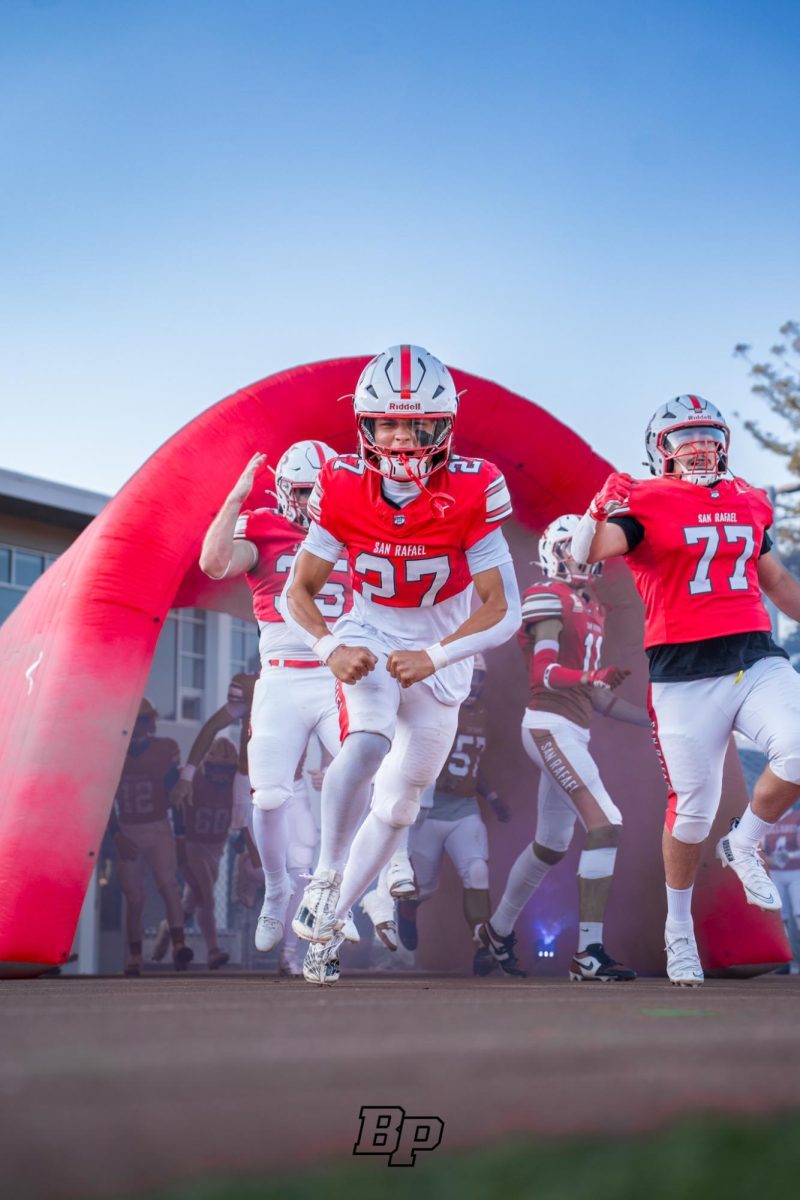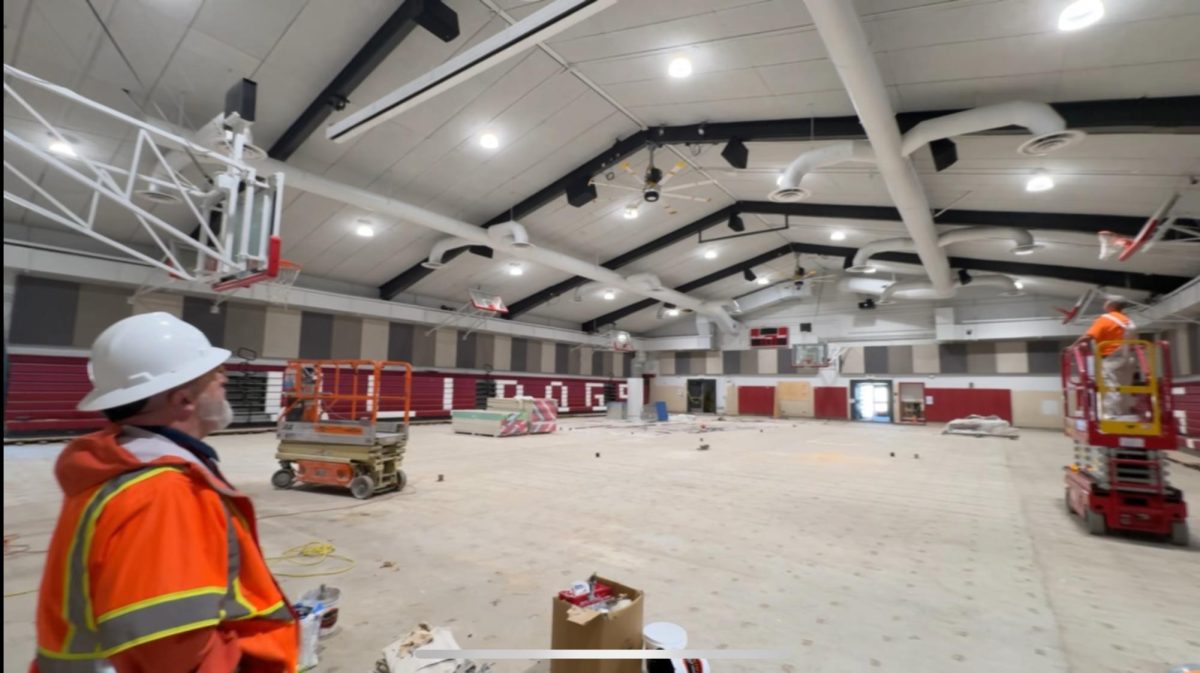This project started with a prompt for the students to make a visually creative and representative film for a poem.
Mia Safanda, Benny Maloney, James Robison, and Olivia Dugan picked the poem: “Like Rousseau’‘ by Amiri Baraka. They drafted ideas for a screenplay and created a planned shot list for filming on the Bolinas Ridge, in San Francisco, and Maloney’s house. They storyboarded, filmed, recorded audio, and edited.
The poem is based on a thought-provoking painting which adds more complexity to the meaning. The sense that people are falling apart and the chaos that ensues when one has no power to save their relationship from collapsing, along with the acceptance that follows. The film represents the disparity of trying to find love in your partner and yourself. Expressing a sensation that leaves you hopeless until resolved: “Dreaming, to go on, and go on there, like animals fleeing,” a feeling of emotional abandonment in which they pull down the wall of conflict even if that means separating.
The film starts with dark clouds overlooking San Francisco and in the background the voice of the narrator guides us through lines of the poem, showing a woman and a man at a crosswalk together, we then see a visual representation of the man’s feelings as they stand distantly in a field looking at one another, he wants to stay together yet he can feel the distance between them. The film walks us through the contrast of emotions, from passion to loneliness as the two begin to fall apart. He feels as though he’s lost her and we later see this represented as the man is searching for the woman in a vast forest, but never truly finds her. The film takes us to the man and woman, at their home, both sitting across from each other silent, the man wants to tell her so many things but can’t, because she won’t listen. In his mind, this feeling of frustration builds up, until he explodes and spews what he’s feeling in a fit of anger.
Transitioning from that scene, we observe how the man packs his things into a bag and embraces the woman with a warm but distant farewell hug. As they come to peace with what is happening, he leaves the house and sees he will never be able to be truly happy with her and later finds happiness within himself.
This film about the poem was said to have a lot more creative freedom with what they could do which made it easier for them to create. Safanda says, “Projects can vary in difficulty by what the films are and it depends on how many shots, actors, and locations you need to film at.”
Robison says, “Media Academy is a class where you dive into the art and process of filmmaking, but it also helps you build your leadership and teamwork skills with a fun and inventive approach. As well as teaching you aspects of storytelling and the creative process all of which you carry for the rest of your life.”
Media Academy has been a part of San Rafael High School since 2001 but was not fully implemented till 2002-2003. Jeannine Thurston got the idea from an academy at Archie Williams called R.O.C.K., which stands for Revolution of Core Knowledge. It was a two-year program for 9th and 10th graders where they were given projects and had to work together in different subjects like Art, English, Social Studies, and Drama.
She was intrigued by the way that her son was learning so she did more investigating. She came to the conclusion that that was a style of teaching and presenting information to students that she agreed with and suited her.
As she was researching programs and different ways to teach, the principal at the time Judy Colton had asked the faculty if anyone was interested in starting academies or clubs. “I raised my hand so we could get the process started,” Thurston says.
To get the program started, Thurston had to find people who would be interested in teaching the history and film portions as she would be teaching English.
Spaelti taught history for seven years in the academy. When she had her kids she wanted to have more time to spend with them and have less commitment to the academy. Ashley Ayoob stepped up and wanted to join the team for the history class portion. Ayoob says, “When Spaelti left I jumped at the chance to join the team.” Steve Temple started teaching the academy a few years after it had started. Once they had found the people who wanted to be a part of the program they worked to get a grant that would help them get all the equipment for the film class. The grant that they wrote was called the Information Technology Program.
This program is important because it creates a sense of community.
This year there are only two periods that are based on Media Academy. One of the periods is English which is taught by Thurston. This is where they read and learn poems that will contribute to the second block. The second period is the film portion taught by Steve Temple which is where they take what they have learned in English and make it into films. Temple has been working at San Rafael High School since 2002 and did not join till 2004.
There used to be three teachers, including Ayoob who taught the Social Studies portion of the academy after Spaelti. Ayoob left in 2024 because she wanted to be a present mother in her kids’ lives so she made the tough decision to leave San Rafael High School and go to Terra Linda High School. Ayoob says, “I think in many ways MAX is what kept me at SR as long as I was. I had three babies in four years and the pandemic afforded me to kind of not fully understand the weight of balancing motherhood, teaching, and all that comes with it.”
The shift with Ayoob leaving was very big for the program. Temple says, “From our perspective, she was part of a three-legged stool and we are missing one of the legs.”
He and Thurston explained that they bounce ideas off each other for the program and their not being able to have that third person is different and they are having to adjust to the change.
Thurston has also explained, “The academy has changed since Ms. Ayoob has left this year more than last year because there was always US history being taught while I was doing American literature. Now I have to go over some parts of American Literature that would have been taught in history but now that we don’t have a history teacher it can be hard.”
As of now Thurston and Temple don’t know if there will be a teacher that will take over that part of the program because no teachers in the history department have an interest in joining the academy.
One upside to not having history in Media Academy is that they can focus more on English and make movies based on the books that they are reading or poems that they are learning.
Having multiple teachers is beneficial to the student too, Thurston explains that when she notices something off about a student they can relay and share the knowledge of that information to the next teacher. The next teacher can then check in and make sure everything is alright with the student or if something is going on with that student.
Scarlett Greenwood says, “I think having multiple teachers has been good because Thurston will know my writing and what I am capable of and Temple will know how I am in the class.”
Ariel Sinelnikoff, alumni of the Media Academy program at San Rafael High School, and now a screenwriter and film director, says, “One of the many things I loved about being in MAX is that each teacher had their specialty. Mr. Temple was able to focus on teaching us the technical skills of filmmaking, while Ms. Thurston taught us how to be the best writers we could be.”
Media Academy is what is called a “project-based class,” in which students work together to create authentic projects. Temple says, “Project-based learning is more authentic in terms of what the real world is like.”
With project-based learning, students can learn skills that they can use in everyday life. These skills include teamwork and how to get along with people, even when you might not like who you are working with.
Ariel Sinelnikoff says, “One of my favorite aspects of MAX was that we were treated like adults, which was probably the first time as a teenager that I was treated that way.”
Students in Media Academy are trusted with numerous responsibilities. A couple being, handling and borrowing expensive equipment, as well as being allowed off campus during school hours for film shoots. They are treated as adults and are expected to act accordingly, allowing more freedom, creativity, and a sense of pride within the academy. However, this responsibility doesn’t come without risk if students don’t respect their trust.
Ariel also states, “Some of the most talented students I knew completely bungled their chances of leading a group or checking out equipment because they got blacklisted for not returning gear on time, or they pissed off someone at a location they were shooting in, or they didn’t rise to the occasion when it came to leading their group project.”
Communication skills are built in Media Academy because the students don’t always work with someone that they are familiar with, it allows them to learn how to communicate in new and different ways on a project. This skill they can then use later in life with colleagues or in real-life situations.
Emi Villanueva, a senior at San Rafael High School in Media Academy, says, “This program has allowed me to broaden my communication skills as it has opened up opportunities for me to work with others which I wouldn’t usually work with towards a common goal.”
The program also helps students learn problem-solving skills and resilience as things begin to go astray. At the beginning of a project, a director is decided to run the group, if things begin to fall apart it is their responsibility to keep the group moving fluently. Through disagreements or hurdles, the group must persevere as they only have each other to ensure they reach their end goal.
Mackenzie Benson, a senior at San Rafael High School, says, “Media Academy has helped me learn how to be resilient when things are going wrong when we are in a crunch. Instead of struggling on my own to fix a problem, I’ve learned through Media Academy that having help from your peers isn’t necessarily a bad thing and it has helped me become more resilient in the face of adversity.”
Students collaborate on many different parts of the project like making screenplays before they can film. Screenplays are written descriptions of all aspects of the story that the film is then built on. The actors’ appearance, emotion, dialogue, the environment’s lighting, sound, style, and more must all be taken into account when writing a screenplay. The students must work together with each other to create and agree on these aspects to make one screenplay.
As students are working on making movies they are put into groups. Groups in Media Academy are usually six people but can be less. Groups can be hard for Thurston and Temple to make as they were explaining how they make the groups they said that they let everyone choose someone that they would want to work with and then people that they don’t want to work with. It gives people the opportunity to prove that they can work well with their friends or the people that they put down.
Thurston says, “Making the groups is like a giant 3-level chess game.” They want people to be happy but at the same time, they want them to be challenged and make sure they are all getting the work done. They also made the point that if they don’t make groups the same people would work together every time.
Lazlo Clements, a senior from San Rafael High School, says, “It’s been fun going off campus and building new connections with people in groups.” Many other students have talked about how they enjoy groups and how they look forward to the next group to see who they will be able to work with for the next project.
Past students who have taken Media Academy have used what they have learned in the academy for jobs out of college. Thurston says, “Past students have gone into advertising, marketing, architecture and we have several graduates that have pursued careers in media and film.”
Whether students decide to pursue film or other lines of work, Media Academy inspires students, it teaches skills that correlate with professions and are invaluable in their future. Building confidence and experience in those fields that stay with them.
Ariel Sinelnikoff says, “Media Academy was pretty much the genesis of my film career. Almost all of the basic knowledge of screenwriting, directing, shooting, and editing that I gained as a young person was learned in those classes.”
Media Academy has had changes over the last year, with Ayoob leaving and not having the history portion in the Academy, to now anticipating that Thurston will be retiring in the upcoming years.
Temple says, “There is an English teacher who is interested in taking over her position in the academy and who is a good fit.”
The upcoming years are not certain with the changes, but the teachers are eager to keep this academy going at San Rafael High School.
Students like Safanda, Maloney, Robison, and Dugan will keep getting the chance to manage projects and make movies to show what they know and can do.

